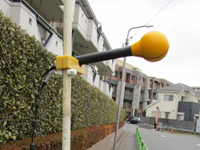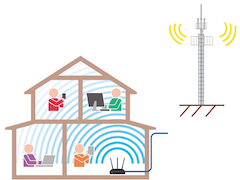

|
|
Japanese
|
search
|
|


We are surrounded by a variety of devices that use radio waves, for example, mobile phones, mobile phone base stations, wireless LANs. Radio waves from the devices are utilized under the condition where there is no adverse health effect to human bodies in accordance with the Japanese Radio Wave Protection Guidelines. On the other hand, public concerns about the radio waves from 5th generation (5G) systems have raised overseas and act as a resistant role on their large-scale deployment. The same voice also exists in Japan. Although we certainly know we live with electromagnetic(EM) waves, including radio waves, since they are invisible, we cannot directly capture how strong they are. Therefore, it is important to comprehensively grasp the strength of radio waves from various sources, accumulate data, and widely share information of EMF exposure levels. In response to the above needs, the Electromagnetic Environment Laboratory have conducted large-scale, long-term measurements of EMF exposure levels since FY2019, which is the first study by the national research institute with measurement techniques for the radio wave environment in Japan. By combining spot measurements using electric field probes, measurements by personal portable exposure meters, and wide-area measurements using antennas mounted on a car rooftop (so called car-mounted measurements), we obtain large-scale and detailed data on EMF exposure levels with minimal bias in the data.


Based on the data obtained through measurements and surveys, we are researching how risk communication regarding EMF exposure should be.
In collaboration with research institutions conducting related cohort studies, we utilize the data from this project and provide technical support for EMF exposure assessment. Data from this project is also used for trend analysis to examine the relationship between diseases and radio use.